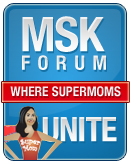Berapa ramai antara kita yang betul2 tahu dan faham bagaimana susu ibu dihasilkan? So for today, my posting is about breastmilk production...
The breast is a gland consisting primarily of connective and fatty tissues that support and protect the milk producing areas of the breast. The milk is produced in small clusters of cells called alveoli. The milk travels down milk ducts to the milk sinuses, which act as a collecting reservoir. These sinuses are located behind the areola, the pigmented area around your nipple.
Breastfeeding success has nothing to do with the size of your breasts or nipples. Breast size is an inherited trait and determined by the number of fat cells you have. The breasts will enlarge with pregnancy and breastfeeding. Breastfeeding is a supply-and-demand process. Therefore, the more you nurse, the more milk you produce!
There is 4 important points:
1. Anatomy of the female breast
The nipple and areola (the dark area around the nipple) enlarge and darken during pregnancy. This may help your baby latch on by providing a clear “target.”
The small bumps on the areola are called Montgomery glands. They produce a natural oil that cleans, lubricates, and protects the nipple during pregnancy and breastfeeding. This oil contains an enzyme that kills bacteria and makes breast creams unnecessary. Use only water to clean your breasts. Soaps, lotions or alcohol might remove this protective oil.
Each nipple has 15 to 20 openings for milk to flow.
When your baby nurses, the action of baby’s jaw and tongue pressing down on the milk sinuses creates suction. This causes the milk to flow out of your breast and into your baby’s mouth.
2. The let-down reflex
How your body responds to your baby’s suckling:
Infant suckling stimulates the nerve endings in the nipple and areola, which signal the pituitary gland in the brain to release two hormones, prolactin and oxytocin.
How your breast responds to your baby’s Suckling:
* Prolactin causes your alveoli to take nutrients (proteins, sugars) from your blood supply and turn them into breast milk.
* Oxytocin causes the cells around the alveoli to contract and eject your milk down the milk ducts. This passing of the milk down the ducts is called the “let-down” (milk ejection) reflex.
* Let-down is experienced in numerous ways including:
- Your infant begins to actively suck and swallow.
- Milk may drip from the opposite breast.
- You may feel a tingling or a full sensation (after the first week of nursing) in your breasts or uterine cramping.
- You may feel thirsty.
NOTE:
There may be many let-downs during a feeding, of which you may or may not notice. Because the brain plays such a large role in the release of hormones that cause the milk to eject, it is very normal for let-downs to occur in other situations as well. For example, let-down may occur when you think about your baby, hear your or another baby cry, when it is your scheduled nursing time, when you are sexually stimulated or during orgasm.
If the let-down occurs at an awkward time, cross your arms over your chest, or press the heel of your hand over the nipple area and apply pressure until the leaking stops. It may also help to wear cotton breast pads (without plastic liners) in your bra to protect your clothing, especially during the first weeks. This type of response will usually lessen after the first few weeks of nursing.
Uterus response postpartum
Release of the oxytocin hormone while breastfeeding will also cause the uterus to contract. This may be more noticeable if you have previously had children. This mechanism helps your uterus return to its pre-pregnancy size quickly.
Interference with let-down
A variety of factors may interfere with let-down:
- Emotions such as embarrassment, anger, irritation, fear or resentment
- Fatigue
- Poor suckling from improper positioning
- Not enough time baby is actively nursing
- Stress
- Negative remarks from relatives or friends
- Fear of pain in your breasts or uterus (i.e., sore nipples or afterbirth pains)
- Breast engorgement in the first few days
Suggestions for creating a supportive nursing environment
- Find a peaceful atmosphere for nursing. Before beginning the feeding, unplug the phone, turn on relaxing music and do deep breathing. (Take four or five deep abdominal breaths.)
- If breastfeeding in public makes you uncomfortable, insist on your privacy and/or drape a light cover over your baby and your shoulder.
- Interact with friends and breastfeeding professionals who are supportive of breastfeeding. Do not let well-meaning friends and relatives who have different attitudes discourage you.
- Restrict visitors until you are comfortable.
- Be around other nursing mothers. Attend a postpartum exercise class and/or support group.
- Be sure your baby is positioned properly and allow enough suckling time.
Another 2 points will be continued next time okey... Dah panjang berjela dah ni, sure bosan...
3. Your milk
4. The family's role
Saturday, February 28, 2009
Subscribe to:
Post Comments (Atom)















2 comments:
thanks for da info, sgt bergune pada mak buyung yang ilmu ciput neh..
p/s kesian bapak budak tgk ajela bb BF (tengok ade makne tu, kui kui kui..)
hahaha,lawak laa murni ni...
Post a Comment